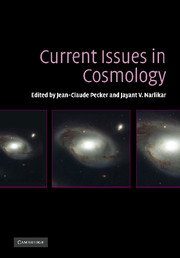Book contents
- Frontmatter
- Contents
- List of contributors
- Preface
- Part I Observational facts relating to discrete sources
- Part II Observational facts relating to background radiation
- Part III Standard cosmology
- Part IV Large-scale structure
- Part V Alternative cosmologies
- Part VI Evidence for anomalous redshifts
- 15 Anomalous redshifts
- 16 Redshifts of galaxies and QSOs: The problem of redshift periodicities
- 17 Statistics of redshift periodicities
- 18 Local abnormal redshifts
- 19 Gravitational lensing and anomalous redshifts
- Part VII Panel discussion
- Index
15 - Anomalous redshifts
Published online by Cambridge University Press: 15 December 2009
- Frontmatter
- Contents
- List of contributors
- Preface
- Part I Observational facts relating to discrete sources
- Part II Observational facts relating to background radiation
- Part III Standard cosmology
- Part IV Large-scale structure
- Part V Alternative cosmologies
- Part VI Evidence for anomalous redshifts
- 15 Anomalous redshifts
- 16 Redshifts of galaxies and QSOs: The problem of redshift periodicities
- 17 Statistics of redshift periodicities
- 18 Local abnormal redshifts
- 19 Gravitational lensing and anomalous redshifts
- Part VII Panel discussion
- Index
Summary
Abstract
The time has come to stop calling measured redshifts of extragalactic objects “anomalous” or “discordant.” Observational evidence over 38 years has made it clear that objects at the same distance from the observer can have strongly differing redshifts. Rigorous solutions of the basic mass, energy, and momentum equations show that redshift is primarily a function of the age of the matter constituting a galaxy. Reluctance to accept these results is blocking meaningful advance in physics and cosmology.
Introduction
Starting in 1966 evidence began to accumulate that high redshift quasars were physically associated with low redshift, relatively nearby galaxies. Of course the existence of even one redshift not caused primarily by recession velocity would negate the fundamental assumption on which all big-bang cosmology depends. In the ensuing 38 years a majority of extragalactic astronomers have built a complex and massively publicized edifice on the assumption that redshifts are an identical measure of distance. During these same decades a minority of astronomers have struggled to observe and report the increasingly powerful evidence that contradicts that crucial assumption.
In the present review we show only samples of this contradictory observational evidence taken from a body of evidence that is now too large for even book-sized discussions. Once the empirical rules of association are laid down the pictures and diagrams communicate at a glance more eloquently than text. As a result we will communicate here the main thread of the argument in pictorial form.
Information
- Type
- Chapter
- Information
- Current Issues in Cosmology , pp. 183 - 196Publisher: Cambridge University PressPrint publication year: 2006
